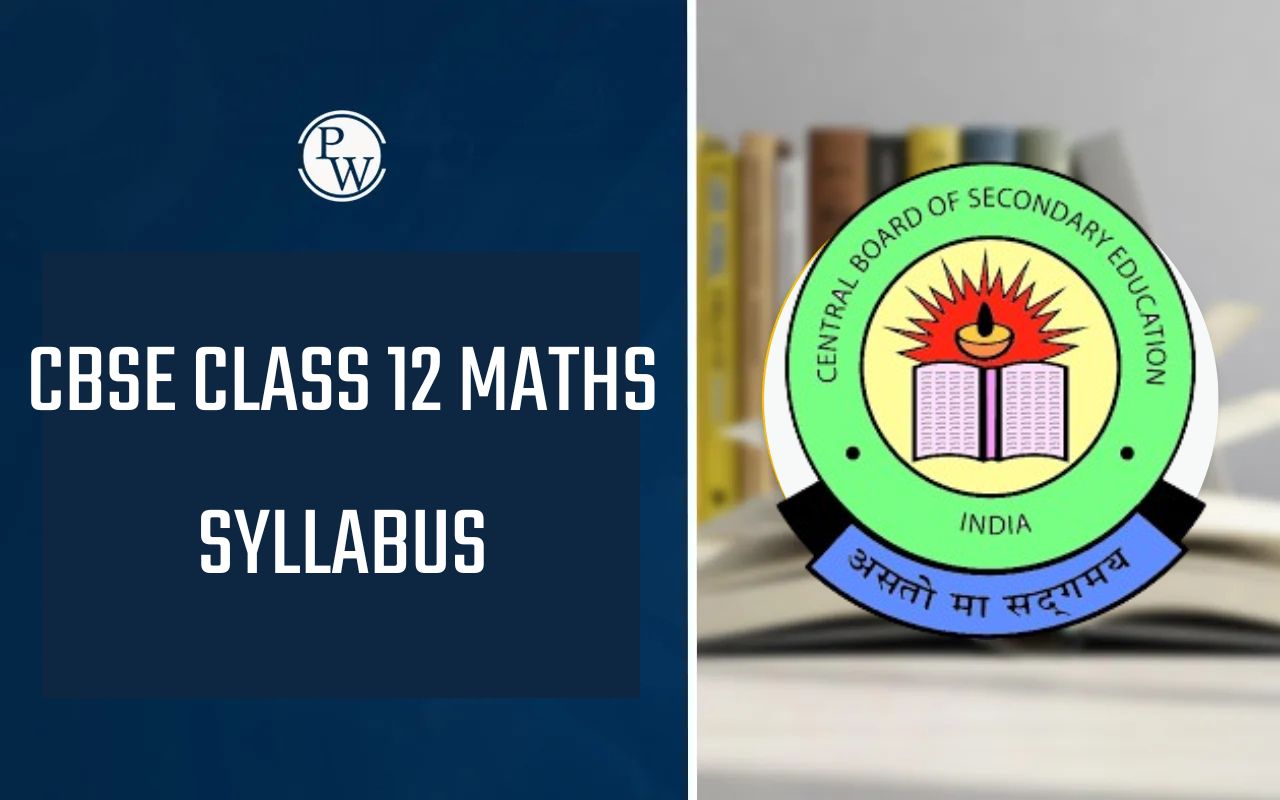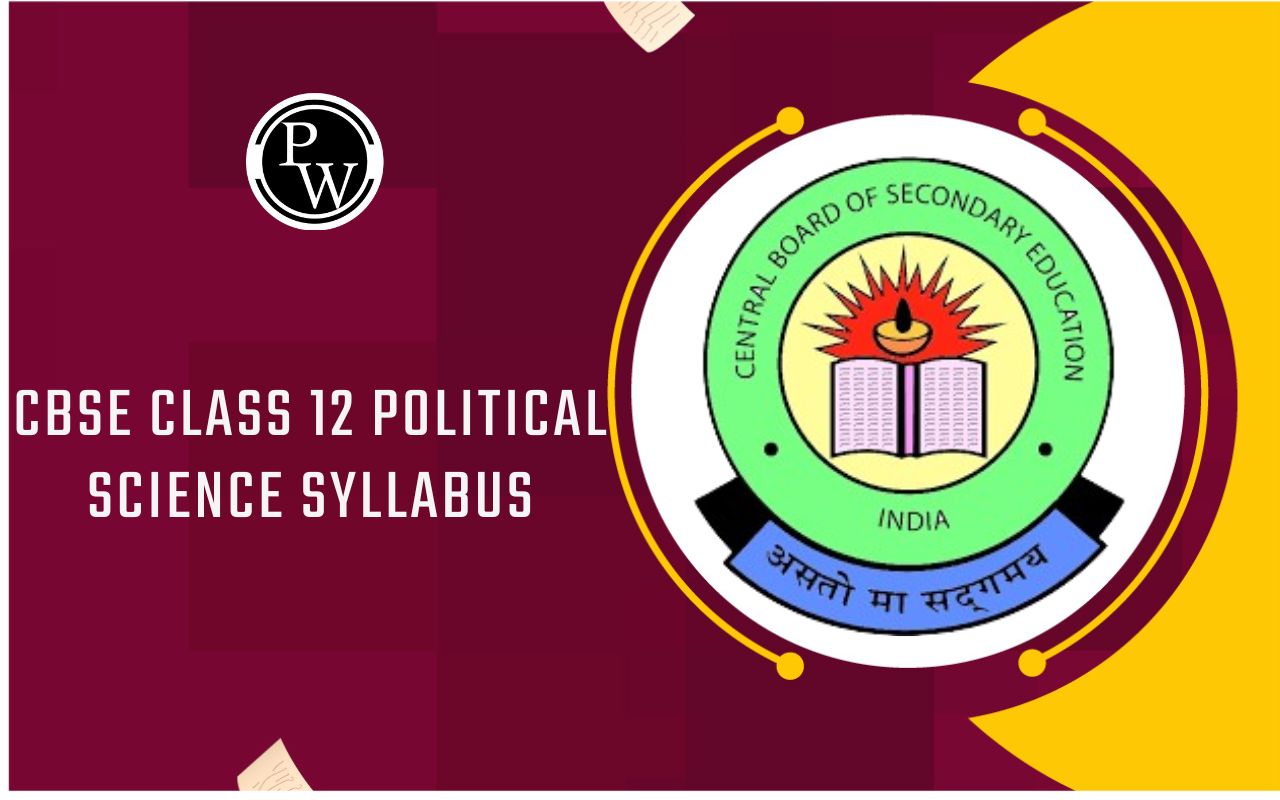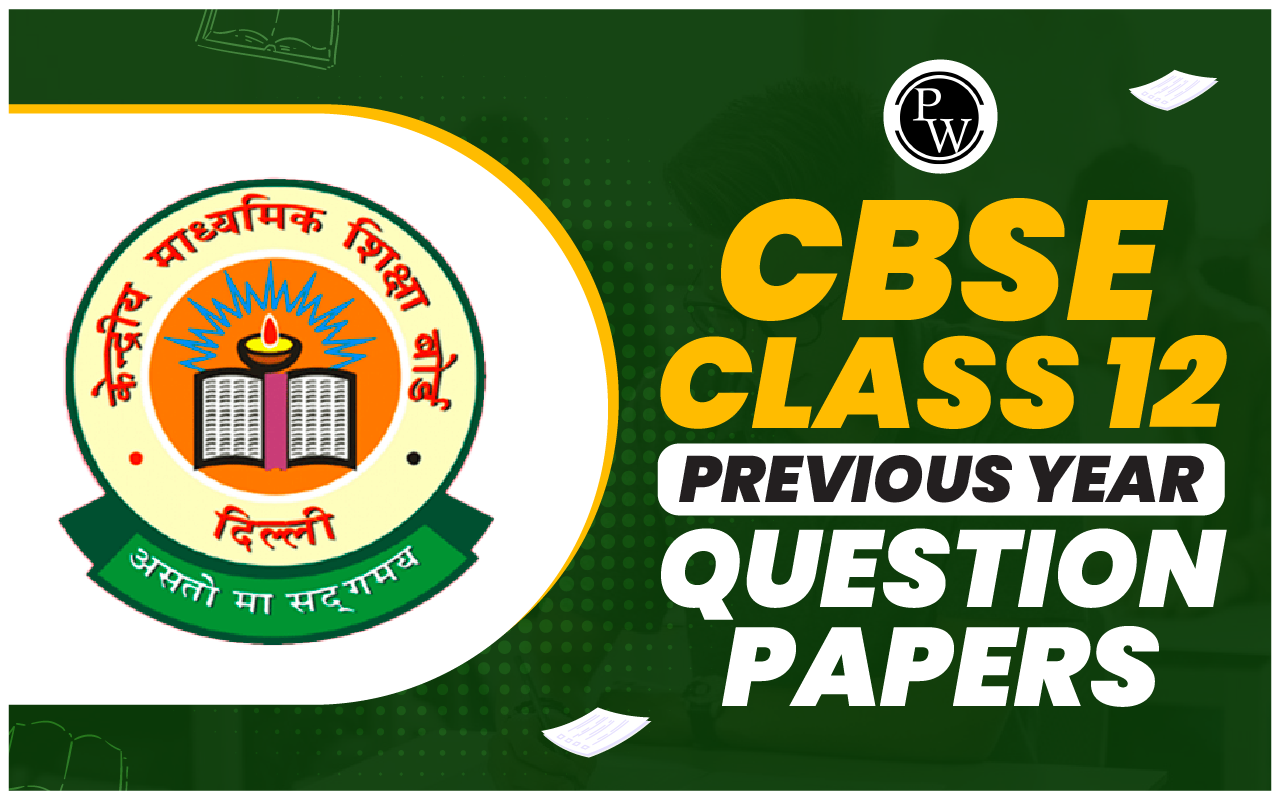
ISC Class 12 Syllabus 2025-26 has been officially released by the Council for the Indian School Certificate Examinations (CISCE). It provides a detailed framework of the topics and skills students need to focus on for the academic year. The syllabus helps students prepare effectively for their board exams and competitive tests by clearly outlining the important areas of study and exam pattern. Following this syllabus ensures a well-organized approach to learning and exam preparation.
ISC Class 12 Exam Structure for 2025-26
The ISC Class 12 exams for 2025 will have a total of 100 marks per subject , distributed between the theory paper, practical work, project work, and internal assessments. Here’s a breakdown of how the marks are allocated:- Subjects with Project Work Only : The theory paper is worth 80 marks , with the remaining marks allocated to project work and internal assessments.
- Subjects with Both Practical and Project Work : For subjects that include practical work, the theory paper is worth 70 marks .
ISC Board Class 12 Syllabus 2025-26 Revised Syllabus
Council for the Indian School Certificate Examinations (CISCE) has introduced a revised syllabus for 12 major subjects in ISC Class 12 for the academic session 2025–26. These updates have been made to align the curriculum with modern educational standards and enhance the learning experience for students. To help students prepare effectively for the upcoming board exams, it is important to refer to the updated subject-wise syllabus. Students can easily access and download the ISC Class 12 Revised Syllabus 2025–26 PDFs from the links provided below.
|
ISC Board Class 12 Syllabus 2025-26 Revised Syllabus |
|
|---|---|
| Subjects | Syllabus PDF |
| Physics | Download Here |
| Chemistry | Download Here |
| Biology | Download Here |
| Mathematics | Download Here |
| History | Download Here |
| Political Science | Download Here |
| Geography | Download Here |
| Sociology | Download Here |
| Psychology | Download Here |
| Commerce | Download Here |
| Accounts | Download Here |
| Legal Studies | Download Here |
ISC Class 12 -The Syllabus for the Following Subjects Remains Unchanged
ISC Class 12 syllabus for certain subjects remains unchanged for the 2025–26 session. Students can continue their preparation based on the existing curriculum for these subjects.
| Syllabus for the Following Subjects Remains Unchanged |
|
|---|---|
| Subjects | Syllabus PDF |
| English | Download Here |
| Indian Languages | Download Here |
| Modern Foreign Languages | Download Here |
| Classical Languages | Download Here |
| Elective English | Download Here |
| Economics | Download Here |
| Business Studies | Download Here |
| Home Science | Download Here |
| Electricity and Electronics | Download Here |
| Environmental Science | Download Here |
ISC Class 12 Syllabus for 2025-26 outlines the key topics and areas of study for each subject. It helps students understand what they need to focus on throughout the year, ensuring a balanced and thorough preparation. Below is the syllabus organized subject-wise to give a clear idea of the curriculum and guide students in their studies.
ISC Class 12 English Syllabus
The ISC Class 12 English Syllabus is divided into two components: English Language and Literature in English, each comprising a theory paper and a project work component of 80 and 20 marks respectively. The comprehensive syllabus is as follows:
|
ISC Class 12 English Syllabus |
|||
|
Section |
Details |
Marks |
Duration |
|
English Language |
Paper I: Theory |
80 |
3 hours |
|
- Composition (400-450 words) |
|||
|
- Directed writing (feature article, speech, proposal writing) |
|||
|
- Grammar and language usage (sentence transformation, phrasal verbs, tenses) |
|||
|
- Comprehension passage (700 words) with analytical & vocabulary questions; summary in grid form |
|||
|
Paper II: Project Work |
20 |
||
|
- Listening Skills: Unseen passage with objective questions (5 marks) |
|||
|
- Speaking Skills: Individual presentation + discussion (5 marks) |
|||
|
- Writing Skills: Written assignment (about 500 words) |
10 |
||
|
Literature in English |
Paper I: Theory |
80 |
3 hours |
|
- Drama: Macbeth (Acts III, IV & V) |
|||
|
- Prism: ISC Short Stories (Atithi, The Cookie Lady, There Will Come Soft Rains, Indigo, Medicine Bag) |
|||
|
- Rhapsody: ISC Poems (Telephone Conversation, Tithonus, Beethoven, Small Towns and the River, Death be not Proud) |
|||
|
Paper II: Project Work |
20 |
||
|
- Writing Skills Project (1000-1500 words) based on literature syllabus |
20 |
||
ISC Class 12 Maths Syllabus
ISC Class 12 Maths syllabus is divided into three sections, covering various topics with specific marks allocated to each unit.
|
ISC Class 12 Maths Syllabus |
||
|---|---|---|
| Unit | Topics | Marks |
| Section A | ||
| Relations and Functions | Types of relations, one-to-one and onto functions, inverse of a function, inverse trigonometric functions, elementary properties of inverse trigonometric functions | 10 |
| Algebra | Matrices – order, equality, types of matrices, transpose of a matrix, symmetric and skew-symmetric matrices, operation on matrices, invertible matrices. Determinants – determinant of a square matrix, minors, co-factors, adjoint and inverse of a square matrix, consistency, inconsistency, and number of solutions of a system of linear equations, Martin’s rule | 10 |
| Calculus | Continuity, differentiability, and differentiation, derivative of composite functions, chain rule, derivatives of inverse trigonometric functions, exponential and logarithmic functions, logarithmic differentiation, second-order derivatives, applications of derivatives, integrals, differential equations | 32 |
| Probability | Conditional probability, multiplication theorem on probability, Bayes’ theorem, random variable, and its probability distribution | 13 |
| Section B | ||
| Vectors | Vectors and scalars, direction cosines and direction ratios of a vector, types of vectors, position vector, scalar (dot) product of vectors, vectors (cross) product of vectors | 05 |
| Three-Dimensional Geometry | Direction cosines and direction ratios, cartesian equation and vector equation of a line, cartesian equation and vector equation of a plane, angle between two lines, two planes, and a line and a plane, lines, plane | 06 |
| Applications of Integrals | Application in finding the area bounded by simple curves and coordinate axis, area enclosed between two curves, application of definite integrals, simple curves | 04 |
| Section C | ||
| Applications of Calculus | Application of Calculus in Commerce and Economics in cost functions, average cost, marginal cost and its interpretation, revenue function, profit function, and break-even point | 05 |
| Linear Regression | Lines of regression of x on y and y on x, scatter diagrams, method of least squares, lines of best fit, regression coefficient, properties of regression lines | 06 |
| Linear Programming | Types of linear programming, mathematical formulation of LP problems, feasible and infeasible regions, feasible and infeasible solutions | 04 |
ISC Class 12 Physics Syllabus
Here's the detailed syllabus for ISC Class 12 Physics for the academic session 2025-26:
|
ISC Class 12 Physics Syllabus |
||
|---|---|---|
| Unit | Topics | Marks |
| Electrostatics | Electric charges and fields, Coulomb’s law, electric dipole and dipole moment, Gauss’s theorem, electrostatic potential, potential energy, and capacitance, dielectric constant | 15 |
| Current Electricity | Mobility, drift velocity, Ohm’s law and its proof, internal resistance of a cell, Kirchhoff’s law, free electron theory | |
| Magnetic Effects of Current and Magnetism | Moving charges and magnetism, Oersted’s experiment, Biot-Savart law, Ampere Circuital Law, torque, moving coil galvanometer, magnetism and matter, force on a moving charged particle in magnetic field | 16 |
| Electromagnetic Induction and Alternating Currents | Electromagnetic induction, alternating current, self-induction, variation of voltage and current in an AC circuit, power associated with LCR circuit, AC generators | |
| Electromagnetic Waves | Displacement current, electromagnetic waves, electromagnetic spectrum | 02 |
| Optics | Ray optics and optical instruments, reflection of light, refraction of light, refraction through a prism, refraction at a single spherical surface, ray diagram and derivation of magnifying power of a simple microscope | 18 |
| Dual Nature of Radiation and Matter | Wave front and Huygen’s principle, interference, Young’s double-slit experiment, fringe width, single slit Fraunhofer diffraction | 12 |
| Atoms and Nuclei | Alpha-particle scattering experiment, Rutherford’s Atomic Model, Bohr’s Atomic Model, hydrogen spectrum, composition and size of nucleus, mass-energy relation, mass defect, nuclear reactions, nuclear fission, nuclear fusion, atomic masses, and nuclear density, nuclear energy | |
| Electronic Devices | Semiconductor electronics, semiconductor diode, energy bands in solids, junction diode and its symbol, LED | 07 |
ISC Class 12 Chemistry Syllabus
Here's the syllabus breakdown for ISC Class 12 Chemistry for the academic session 2025-26
|
ISC Class 12 Chemistry Syllabus |
||
|---|---|---|
| Unit | Topics | Marks |
| Solutions | Normality, molality, molarity, mole fraction, solubility of gases in liquids (Henry’s Law), Raoult’s Law for volatile solutes and nonvolatile solutes, colligative properties, osmotic pressure, abnormal molecular mass, Van’t Hoff factor | 25 |
| Electrochemistry | Electrolytic and electrochemical cells, electromotive force (emf) of a cell, Nernst equation and its application to chemical cells, relation between Gibbs energy change and emf of a cell, Kohlrausch's Law of electrolysis and Faraday’s Laws of electrolysis, Galvanic cells | |
| Chemical Kinetics | Rate of a reaction, factors affecting rate of reaction, rate law and specific rate constant, integrated rate equations and half-life, concept of threshold and activation energy, Arrhenious equation, law of mass action | |
| d and f-Block Elements | Position in the periodic table, transition metals, general trends in properties of the 3d-series of transition metals, preparation and properties of K2Cr2O7 and KMnO4, Lanthanoids and actinoids | 14 |
| Coordination Compounds | Definition of ligands, coordination number, isomerism, Werner's theory, VBT and CFT, valence bond theory of coordination compounds, crystal field theory, stability of coordination compound | |
| Haloalkanes and Haloarenes | Nature of C–X bond, nomenclature, substitution reactions, uses and environmental effects of - dichloromethane, trichloromethane, tetrachloromethane, iodoform, freons and DDT, nucleophilic substitution reactions, elimination reaction (Saytzeff’s rule), Wurtz’s reaction, Grignard’s reagent preparation, Chloroform and iodoform, structure of freons, preparation of haloarenes by Sandmeyer’s and Gattermann’s reaction, by electrophilic substitution | 31 |
| Alcohols, Phenols, and Ethers | Alcohol – Classification, general formula, structure and nomenclature, methods of preparation, physical and chemical properties (of primary alcohols only), identification of primary, secondary and tertiary alcohols, mechanism of dehydration, uses with special reference to methanol and ethanol | |
| Phenols – Classification and nomenclature, methods of preparation, physical and chemical properties, acidic nature of phenol, electrophilic substitution reactions, uses of phenols, preparation of phenol from diazonium salt, chlorobenzene (Dow’s process), manufacture from Cumene, Bromination, nitration and sulphonation (Electrophilic substitution reactions), Kolbe’s reaction (formation of salicylic acid), Reimer – Tiemann reaction | ||
| Aliphatic Ethers – General formula, structure and nomenclature, methods of preparation, physical and chemical properties, uses, Williamson’s synthesis | ||
| Aryl Ethers – Physical properties, preparation of anisole (Williamson’s synthesis), electrophilic substitution (halogenation, nitration and Friedel-Crafts reaction) | ||
| Aldehydes, Ketones, and Carboxylic Acids | Aldehydes and Ketones – Nomenclature, structure of methods of preparation of aldehydes and ketones, physical and chemical properties, mechanism of nucleophilic addition, reactivity of alpha hydrogen in aldehydes and uses, aromatic aldehyde (Benzaldehyde) lab preparation from toluene by oxidation with chromyl chloride | |
| Carboxylic Acids – Classification, general formula and structure of carboxylic group, nomenclature, acidic nature, methods of preparation, physical and chemical properties and uses, classification of mono and di carboxylic acids with examples | ||
| Organic Compounds containing Nitrogen | Aliphatic Amines – General formula and, classification of amines, structure of the amino group, nomenclature, methods of preparation, physical and chemical properties, uses, identification of primary, secondary and tertiary amines | |
| Aniline – Preparation reduction of nitrobenzene, physical properties, chemical properties, Cyanides and Isocyanides, diazonium salts | ||
| Biomolecules | Carbohydrates – Definition, classification (aldoses and ketoses), monosaccahrides (glucose and fructose), D-L configuration oligosaccharides (sucrose, lactose, maltose), polysaccharides (starch, cellulose, glycogen), importance of carbohydrates, test for glucose and fructose, disaccharides – structures of sucrose, maltose and lactose (glycosidic linkage), polysaccharides – starch, cellulose, glycogen | |
| Proteins – structural units of proteins, basic idea of - amino acids, peptide bond, polypeptides, proteins, structure of proteins - primary, secondary, tertiary structure and quaternary structures (qualitative idea only), denaturation of proteins, enzymes, hormones - elementary idea only | ||
| Vitamins A, B, C, D, E and K: classification (fat soluble and water soluble), deficiency diseases | ||
| Nucleic Acids – DNA and RNA | ||
Steps to Download ISC Class 12 Syllabus 2025-26
Step 1: Go to the official Council for the Indian School Certificate Examinations (CISCE) website:
https://www.cisce.org
Step 2: Look for a tab or menu option named “Publications” or “Syllabus” on the homepage and click on it.
Step 3: Under the syllabus or publications page, find the section for Class 12 (ISC) and select the academic year 2025-26.
Step 4: From the list of subjects, click on Mathematics or the subject for which you want the syllabus.
Step 5: The syllabus will be available in PDF format. Click on the download link to save the syllabus file to your device.
Step 6: Open the downloaded PDF to check the syllabus, and save it in a folder for easy reference.
ISC Class 12 Syllabus 2025-26 FAQs
Where can I download the ISC Class 12 Syllabus 2025-26?
Which subjects have a revised syllabus for 2025-26?
What are the main subjects covered in ISC Class 12?
How can I effectively plan my study schedule based on the syllabus?










